“We all have fears…but all that matters is the way we battle those fears. It’s a process of self realisation.”
Says Pitara Studios director Keyur Dekate, who has weaved this message in a humorous and engaging way in his 3D animated short Kapkappi (Hindi term for “shivering”).
Based in 1970s, Kapkappi is the story of a bandit and his rivalry with cold water during winter, and is a tribute to the 70s Indian cinema. “The idea of a bandit fighting the cold water was a collective outcome of both symbolism and human experience,” explains film director Dekate. “The bandit’s character created the contrast between the iconic cinematic rugged persona and the most ordinary and subtle fear of all human beings- cold water.”
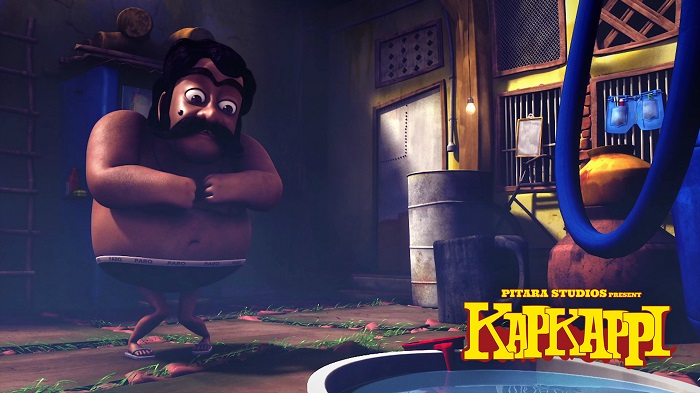
The title as well as the film is inspired from Dekate’s childhood experience. “I heard my father’s screaming and haunted voices while he was bathing, and then shivering from tip to toe as he chanted the words ‘oooohhh…ffff…Kapkappi…eeee iiii….kapkappi….’” And he wondered, “How such a strong man – with great build and a big mustache – who isn’t afraid of even god, is frightened by mere cold water?”
As a film-maker, Dekate has always strived to create something that has originated from the roots, culture and philosophy of India. What enthralled him the most was the 70s Indian cinema which had melodramatic emotions and larger than the life heroism. “At present, film-making techniques have evolved to create innate possibilities of storytelling but what fascinated me about 70s era was the spontaneity of camera movements and the dynamics of the act in harmony with boosting grungy sound effects and melodic themes to create a bolder impact on the audience,” he shares.
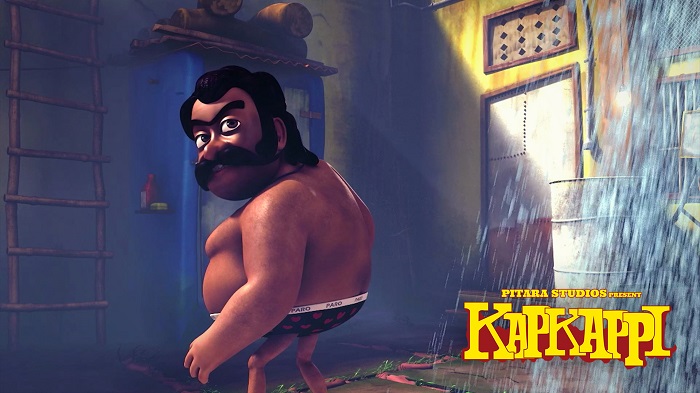
Produced by Divyansh Ganjoo and Mahima Sharma, Kapkappi’s visual style and treatment is influenced by films like Satte Pe Satta and Deewaar. The film’s protagonist Teja (bandit) is inspired from reel-life villain Ranjeet. Dekate and the concept artist /character designer Joel Negi wanted to create a character shape that could define both strength and weakness of his personality. “As Teja has a huge, hairy and bulgy torso with chicken-like skinny legs, it signifies his personality of being both egoistically macho and somehow cowardly at the same time,” he highlights. “This also enhanced the shivering effect with tiny legs shaking with a jelly like body vibrating.”
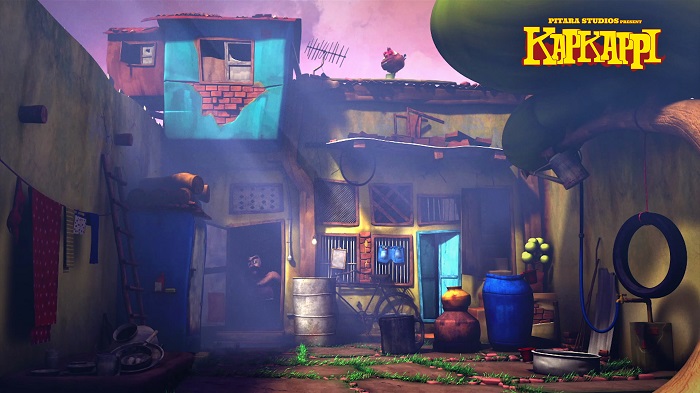
To create the vintage Indian bathroom, Dekate took references from his father’s village home which had an open courtyard behind the house, as shown in the film. The team visited a 60 year-old house belonging to the film’s background concept artists Mukul Lokre, to take references of the architecture and utility oriented design of that era. Elaborates Dekate, “Props and assets of the background were designed in such even and odd proportions as to harmonise with Teja’s aesthetics. We used grungy and high contrast colour palette to give a vibrant Indianised look to the film. All the textures were hand painted for 3D, with bold and raw brush strokes by Joel and the team.”
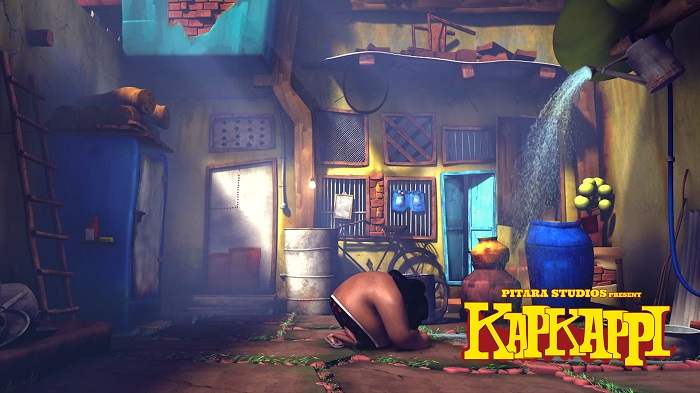
“I believe that the thought should be animated,” says Dekate. According to him, the most crucial and soulful part of the film production was developing a unique cinematic animation timing. “I wanted my characters to think and breathe on screen, so they seem alive rather than animated.” He along with animation duo Saurav Tripathi and Ashish Hedaoo explored the possibilities of action holds and syncing the characters action with handheld camera choreography to maintain spontaneity of the act. If the contemporary timing of a particular act is 250 frames, in Kapkappi it would be 850 frames.
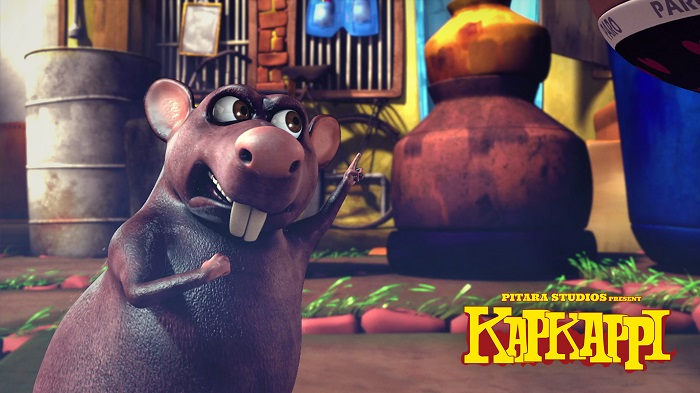
A fly is attached to Teja’s character throughout the film to add random dynamics to the act. The secondary characters like rooster and rat have played an important role in maintaining the story arc, establishing the conflict and the reaction timings. “As I also come from a live-action background working as a cinematographer, I wanted the film to be felt like it has been actually shot. I observed the 70s cinematography and myself animated all the cameras, keeping the cinematic magnification of lenses and movements more turbulent to add more weight to the act.”
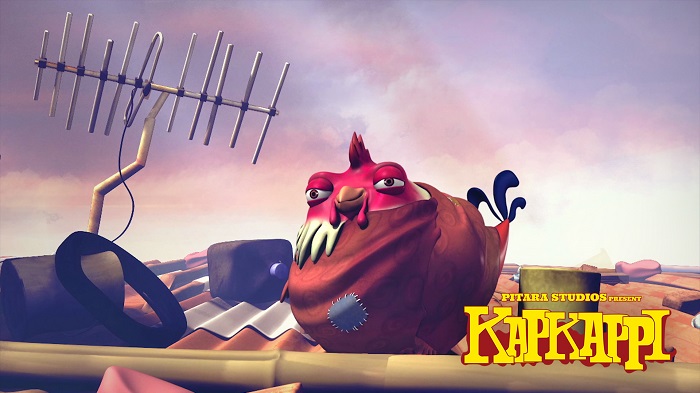
To make all vibrant visuals and actions more cinematic, the team experimented with CG lighting techniques and developed a cinematic style that could better justify the content. With lighting technical director Sunil Patidar, they staged the lighting as in live action sets. “There is no attached character three point lighting setup; the character is mostly kept against the key light to make it more believable. As the character moves in and out of shadows and highlights of the set, it adds more realism and weight to the visuals.”
Instrumentation from the Don theme inspired the soundtrack which played the most crucial role in reviving the 70s era. Composed and arranged by Swapneel Mahindre, key instruments of the film like synth and violin were recorded by the musicians of 70s and were processed manually on vintage analogue mixers to create textures of the era.
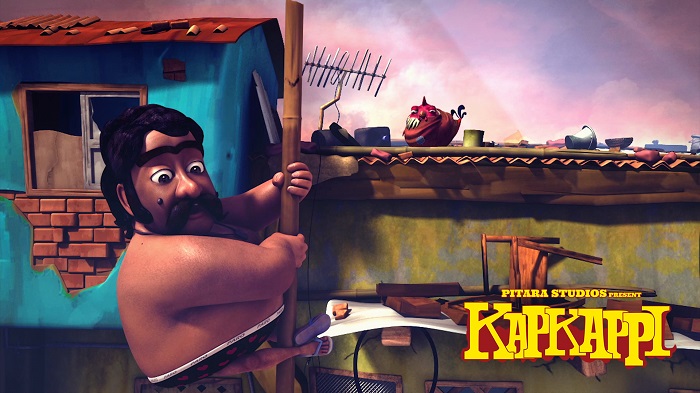
Kapkappi was selected and screened in 22 film festivals, including the prestigious DOK Leipzig Film Festival (Germany), Girona Film Festival Kids (Spain) and Monterrey International Film Festival (Mexico). It received an overwhelmingly positive response everywhere.
However, the audience will have to wait for six more months before the film goes digital. But let me tell you, it will be worth the wait!

